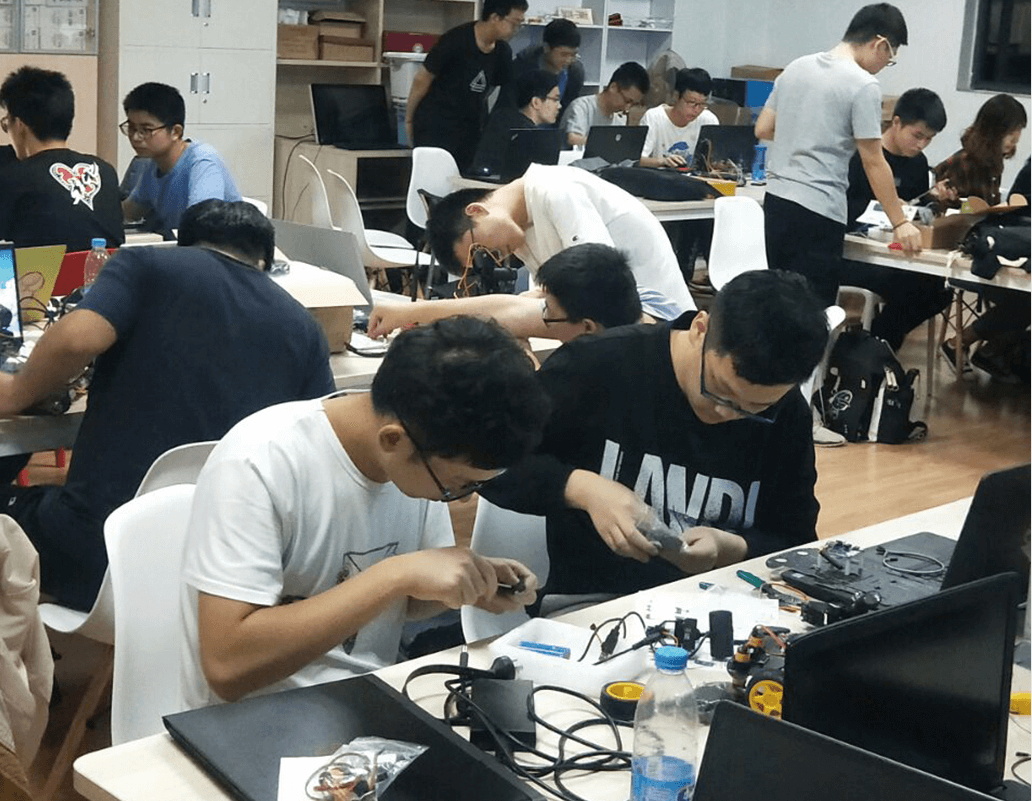With the rapid development of artificial intelligence technology, the field of education is undergoing unprecedented changes. As an important force in this change, educational functional robots are gradually penetrating and profoundly affecting the teaching practices and educational concepts of colleges and universities. This article will combine the current hottest topics to explore the teaching applications of educational functional robots in colleges and universities and the concepts behind them.
Diversification of teaching applications

Educational functional robots have shown extremely high diversity and practicality in teaching applications in colleges and universities. First of all, they can be used as training experimental platforms, integrating a variety of high-tech technologies such as electrical, electronics, single-chip microcomputers, mechanical design, sensors, artificial intelligence, electromechanical control, digital signal processing, etc., to provide students with rich practical opportunities. These robots can complete hundreds of practical experiments, helping students better understand and master theoretical knowledge, and improve their practical and innovative abilities.
Secondly, educational functional robots play an important role in programming education. Through robot programming education, students can learn how to control and manage robots, which not only cultivates their logical thinking ability, but also stimulates their innovative spirit and practical ability. At present, most robot programming education at home and abroad adopts building block programming, which is simple and easy to learn and suitable for students of all ages, especially for beginners in colleges and universities.
In addition, educational functional robots also show great potential in the fields of language education and STEM education. For example, with the help of voice recognition technology, robots can automatically evaluate students' spoken language and provide customized voice learning services. In STEM education, robotics can help students apply theoretical knowledge to practical projects and improve their practical ability and interdisciplinary comprehensive ability.
Innovation of educational concepts

The wide application of educational functional robots has not only changed the traditional teaching methods, but also promoted the innovation of educational concepts. First, it emphasizes the return of students' subject status. In traditional classroom teaching, teachers are often the transmitters of knowledge, while students are passive recipients. The emergence of educational functional robots allows students to choose learning content and learning methods more independently, thereby stimulating their interest and enthusiasm in learning.
Secondly, educational functional robots focus on personalized teaching. Based on big data and cloud computing technology, robots can provide personalized educational services according to different needs and differences of students such as age, gender, learning characteristics, and subject characteristics. This personalized teaching mode helps to better meet students' learning needs and improve learning effects.
In addition, educational functional robots also emphasize practical and interactive learning experiences. Robot technology has the characteristics of strong practicality and operability. Through interactive operations with robots, students can get a more intuitive, in-depth and interesting learning experience. This practical and interactive learning method helps to cultivate students' practical ability and problem-solving ability.
Challenges and opportunities

Although educational functional robots have shown great potential and advantages in teaching applications in colleges and universities, we should also be aware of the challenges they face. First, technical bottlenecks are an important factor restricting the development of educational functional robots. With the continuous advancement of technology and the deepening of application, we need to continuously break through technical difficulties and improve the intelligence level and stability of robots.
Secondly, insufficient market awareness is also a problem that needs to be solved. At present, although more and more colleges and universities have begun to introduce educational functional robots for teaching practice, some colleges and universities still lack awareness and attention to them. Therefore, we need to increase publicity efforts, improve market awareness, and let more colleges and teachers and students understand and accept educational functional robots.
However, challenges and opportunities coexist. With the continuous development and popularization of artificial intelligence technology, the teaching application prospects of educational functional robots in colleges and universities will be broader. In the future, we can expect the emergence of more innovative teaching methods and teaching models to provide strong support for the cultivation of high-quality talents with innovative spirit and practical ability.
In summary, the teaching application and concept of educational functional robots in colleges and universities are gradually gaining popularity. They have not only changed the traditional teaching and learning methods, but also promoted the innovation and development of educational concepts. In the future development, we need to continue to explore and innovate, give full play to the potential and advantages of educational functional robots, and make greater contributions to the cultivation of more outstanding talents.

